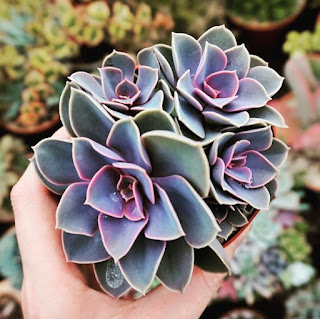Understanding the Mystery: Why Do Some Succulents Get White Spots?
Succulents, with their diverse shapes and colors, have become a popular choice for both seasoned and budding plant enthusiasts. However, even the most robust succulents can occasionally develop mysterious white spots on their leaves. In this blog post, we'll delve into the common reasons behind this phenomenon and explore how to address it effectively.
Mineral Deposits:
One of the primary culprits behind white spots on succulents is the accumulation of mineral deposits. When water with high mineral content, such as calcium or magnesium, evaporates from the leaves, it leaves behind these deposits. Over time, this can manifest as unsightly white spots on the surface of the leaves. To mitigate this issue, consider using distilled water or rainwater for irrigation, as they are generally lower in mineral content.
Sunburn:
Believe it or not, succulents can get sunburned. While they adore sunlight, prolonged exposure to intense, direct sunlight can lead to sunburn, especially if the plants have been accustomed to lower light levels. The affected areas often turn white or pale. To prevent sunburn, acclimate your succulents gradually to increased light levels, especially if moving them from indoors to full outdoor sunlight.
Mealybugs and Scale Insects:
Pests like mealybugs and scale insects can infest succulents, sucking out sap and leaving behind a sticky residue. As these pests feed, they excrete a substance known as honeydew, which can give the appearance of white spots on the leaves. Regularly inspect your succulents for signs of pests, and if detected, treat them promptly with insecticidal soap or neem oil.
Fungal Infections:
Fungal infections can also contribute to the development of white spots on succulents. Overwatering and high humidity levels create conditions conducive to fungal growth. To prevent fungal issues, ensure proper watering practices—allow the soil to dry out between waterings—and provide adequate air circulation around your plants. If fungal infections are suspected, treat them with a fungicide suitable for succulents. If you are concerned about inadvertently overwatering you can use a moisture meter to take away the guesswork.
Edema:
Edema occurs when succulents absorb water at a faster rate than they can release it through transpiration. This leads to the formation of blisters or white, corky spots on the leaves. To prevent edema, avoid overwatering your succulents and maintain a well-balanced watering schedule.
While white spots on succulents may initially cause concern, understanding the potential causes allows for effective diagnosis and treatment. Whether it's mineral deposits, sunburn, pests, fungal infections, or edema, addressing the root cause will help your succulents regain their vibrancy. Regular observation, proper care, and timely intervention are key to ensuring your succulents remain healthy and visually stunning.

.png)






